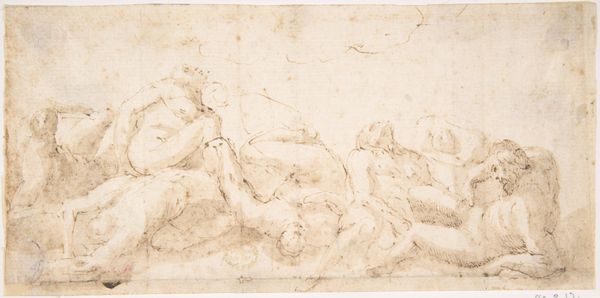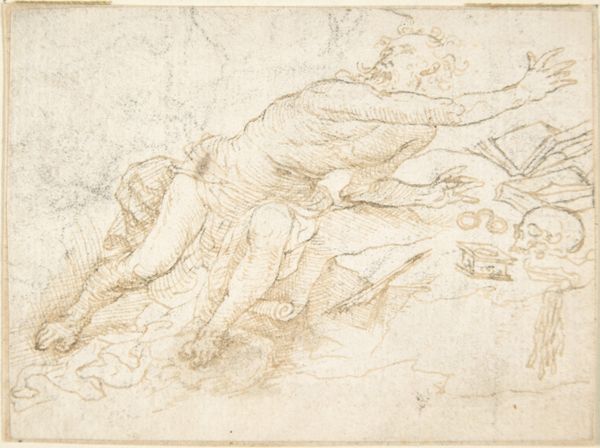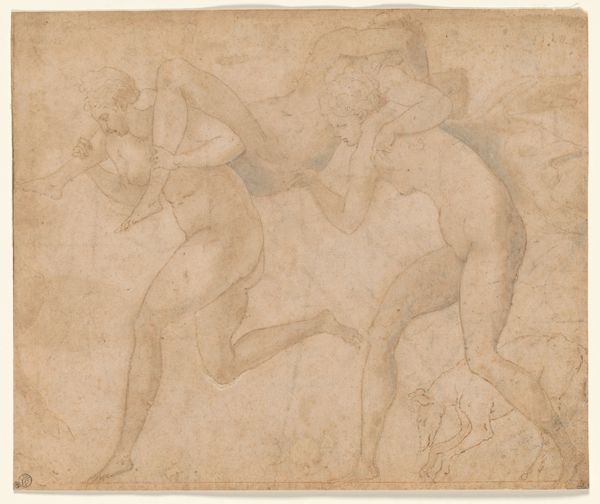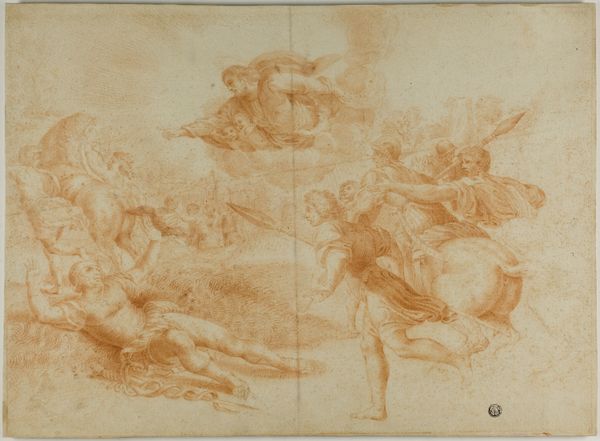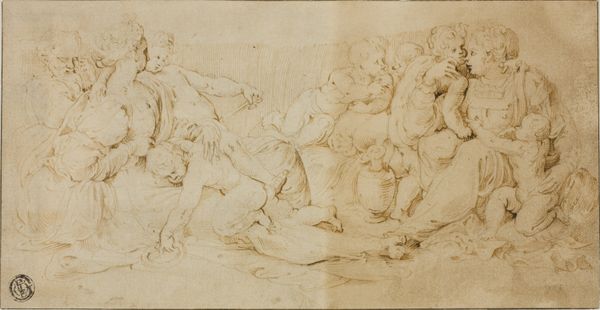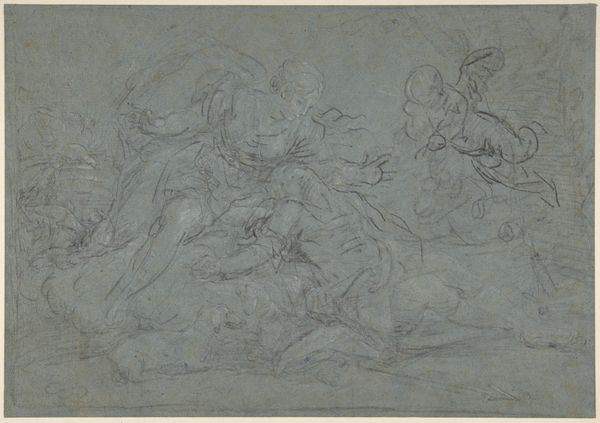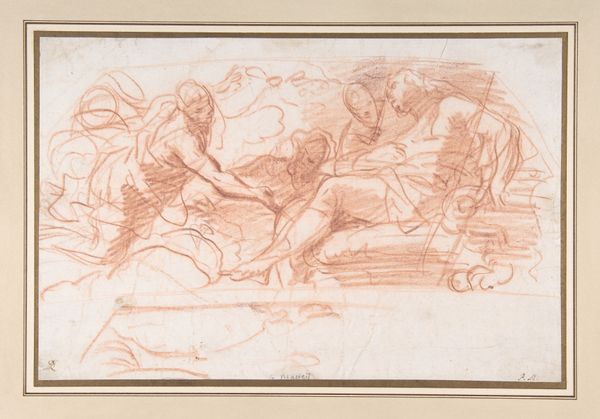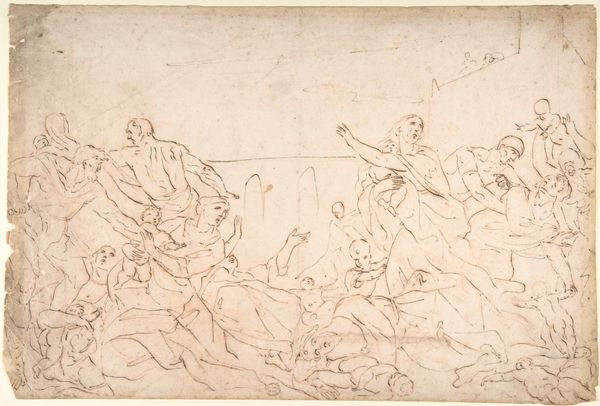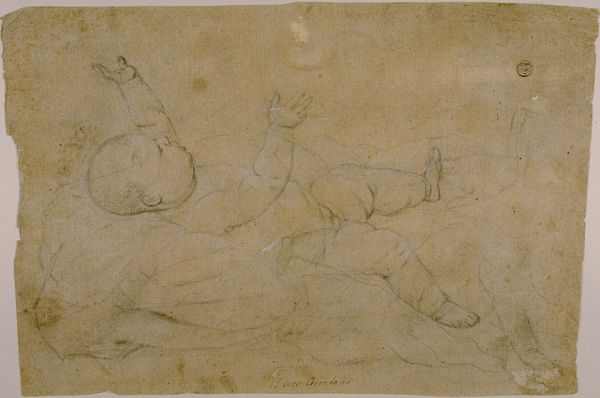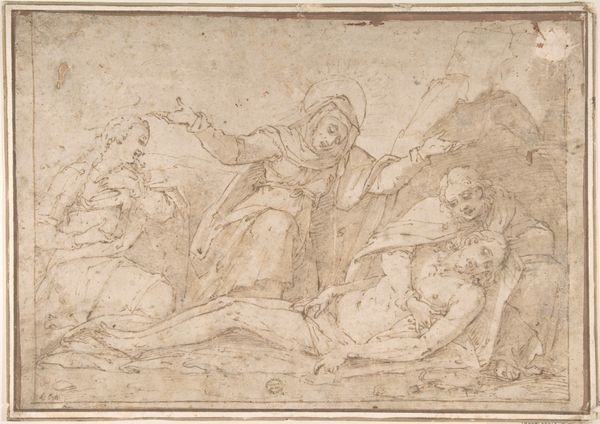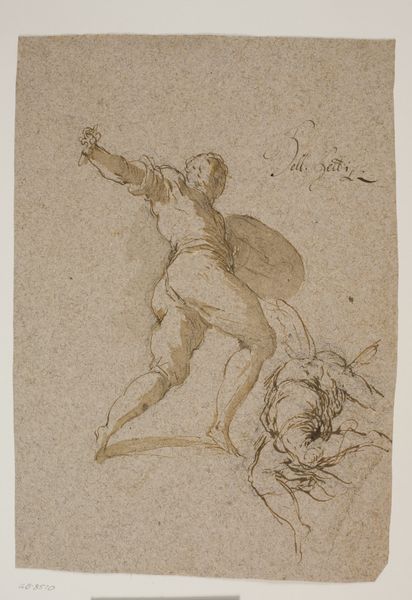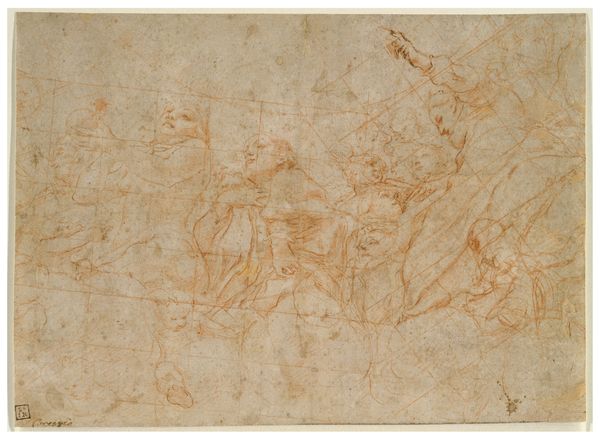
drawing
#
portrait
#
drawing
#
high-renaissance
#
figuration
Copyright: Public Domain
Curator: This is a preparatory drawing by Raphael, dating from around 1508 to 1510, titled "Study of _Diogenes_ in the _School of Athens_", and now residing in the Städel Museum. What are your initial thoughts on this sketch? Editor: My first impression is that it appears to be an academic exercise, focusing intently on form. The materiality speaks of close study—observational drawing intended for eventual inclusion within a larger work. Curator: Exactly. Raphael employed chalk, a readily accessible material during the Renaissance, to create this piece. Its earthy tones create an interesting contrast with the intellectual rigor of the subject, the philosopher Diogenes. Editor: Speaking of context, I'm drawn to the relationship between material cost and social accessibility to it, the fact that with drawing materials such as chalk or charcoal that require specific qualities for proper effect, and knowledge passed through workshops meant social connections could define participation or accessibility to material... Do you feel the selection of such humble tools reflects anything about the character of Diogenes himself? Curator: That's a fascinating perspective! Diogenes, known for rejecting societal norms, makes the cheapness and wide distribution of the raw chalk, but the cost of expertise and studio/school participation is a fascinating interplay, indeed a comment on the material realities available and/or used in a historical time. Editor: Perhaps. And what of his specific positioning within “The School of Athens”? There, amidst these intellectual luminaries, he's rendered here seemingly detached. Curator: Yes, that separation speaks volumes. Diogenes’ philosophical stance of Cynicism – rejecting material wealth and embracing a simple, almost animalistic existence – sets him apart. The drawing captures the stark reality against the elevated classical ideals of reason and order espoused by the other figures within the fresco, what he has to say in a scene about philosophy or thinking... Editor: Considering that juxtaposition, this drawing may prompt discussions of what's deemed disposable or invaluable from a critical approach. The production reveals intention as Raphael's studies emphasize the body, so perhaps Raphael's labor makes visible both the construction and material value in intellectual thought that seeks an escape or freedom from the confines of the very real historical-social realities in its own moment. Curator: This certainly challenges and shifts perspective on conventional views surrounding luxury. Editor: Indeed. A close examination reveals its profound resonance on socio-economic matters that affect gender and race. Thanks for pointing out its importance as it causes us to reflect on these complex histories. Curator: A pleasure, this drawing always provokes such thoughts.
Comments
stadelmuseum about 2 years ago
⋮
Raphael drew the figure of Diogenes for the School of Athens fresco after a live model, probably a workshop assistant. In this superb drawing from the Städel, he handled the silverpoint confidently and fluently to convey both surface structures and the incidence of the light. Important anatomical details have been singled out and repeated in isolated studies. In the fresco, Diogenes the unconventional philosopher without needs is seen reading in a relaxed pose: sprawled out on the steps in front of Plato and Aristotle.
Join the conversation
Join millions of artists and users on Artera today and experience the ultimate creative platform.
